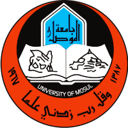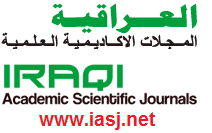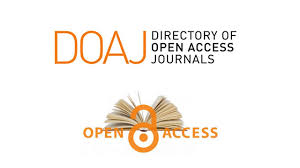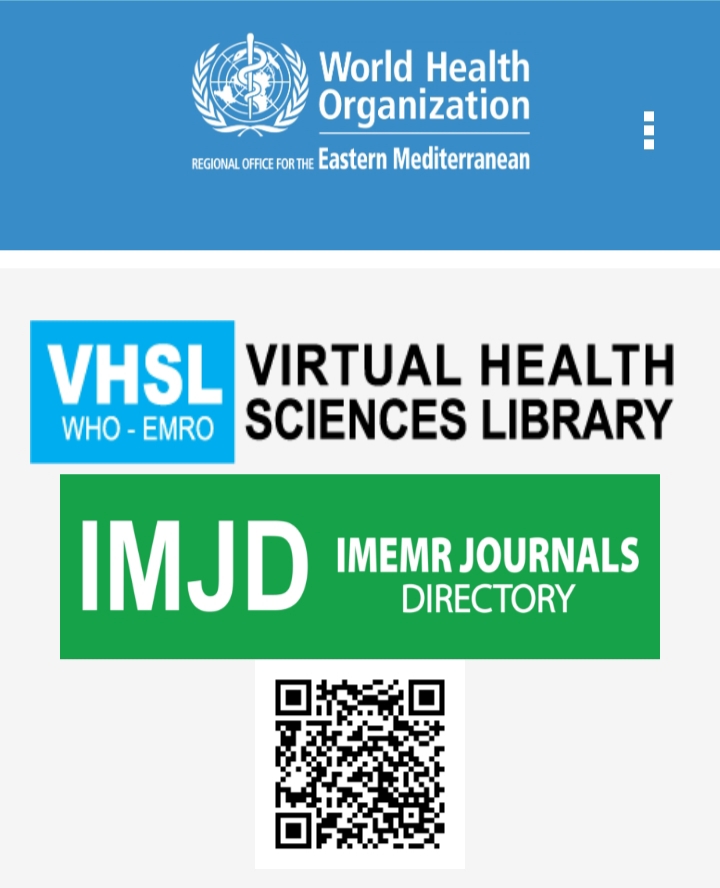Submission Guidelines
Before submitting, please read the following sections carefully in detail.
Submissions to the Al-Rafidain Dental Journal are accepted through our online submission system. To start submission, please create an account and log in. The submitting author will take responsibility on behalf of all co-authors as the corresponding author of the submission and is required to enter full details, including a working e-mail address, phone number, and address, in their online profile. All correspondence, including, but not limited to, the results of the initial evaluation, the Editor’s decision, and requests for revisions or proofreading, will be sent to the e-mail address of the corresponding author, which will be published with the article.
Publication license and copyright
Upon submission, the authors are required to sign a license form for the open-access publication of their work in the journal, granting the University of Mosul the right to identify itself as the original publisher of the article. The authors are required to grant the "University of Mosul" and the journal an exclusive license for open-access publication of their articles with a Creative Commons Attribution license (http://creativecommons.org/licenses/by/4.0), which permits unrestricted use, distribution, and reproduction in any medium, provided that the original work is properly cited.
1- AUTHORS' GUIDELINES FOR MANUSCRIPT PREPARATION
Authors should submit their manuscripts electronically through the journal website submission system to the editorial office at https://rden.uomosul.edu.iq/.
2- NUMBER, NAMES ORDER, and AUTHORS' DISPUTES
The RDENTJ editorial board did not restrict the number of authors for each submitted manuscript, either one or multiple authors; in many cases, the manuscripts with multiple authors give these manuscripts a strong scientific and literature structure, especially when authors share these ideas from different scientific or academic institutions. In such cases, an "author contribution" paragraph should be included when not all authors share equally in all experiment stages, result recording, data explanation, and final manuscript approval. If multiple authors were shared in one manuscript, all of them should pass the minimal requirements of authorship criteria, as explained previously; in addition, editor in chief can ask for more details about authorship contribution and explanation to be a part of the manuscript's authors if the editor in chief feel any kind or nepotism, the editor in chief can omit their names in the final accepted copy of the submitted manuscript. In addition, the writers should determine the sequence in which the authors' names appear. No one else comprehends their contributions and agreements as well as they do. If the authors have not disclosed the method for assigning an authorship order, readers cannot know and should not assume the importance of the authorship order. Ideally, authorship disputes should be settled locally before the journal's peer review process starts; in special cases, the editor-in-chief may help to overcome these disputes. Suppose there are any changes in the authorship order or omission of authorship. In that case, these changes should be supported by a written request by all original authors at the different stages of the manuscript peer review process, acceptance, and publishing.
3- SUBMISSION
The authors have the following responsibilities:
- Their assertion that their scientific work has not been published at all or is under review in another journal, except for the publication of the abstract or preprint.
- The accuracy of the references used and the texts quoted from them.
Our online submission system guides you stepwise through the process of entering your article details and uploading your files. The system converts your article files to a single PDF file used in the peer-review process. Editable files (e.g., Word) are required to typeset your article for final publication. All correspondence, including notification of the Editor's decision and requests for revision, is sent by e-mail.
Role of the Corresponding Author
One author is assigned as the corresponding author acts on behalf of all co-authors. The corresponding author plays a crucial role in the publication process of the academic journal article. This individual serves as the primary contact point between the authorship team and the editorial staff of the journal. Here are the key roles and responsibilities of the corresponding author:
1. Ensuring Author Approval: The corresponding author is responsible for ensuring that all listed authors have approved the manuscript before submission. This includes obtaining agreement on the content and order of authorship.
2. Managing Communication: The corresponding author ensures ethical compliance, including obtaining necessary approvals for human or animal studies. Upholding ethical standards is critical, and this condition emphasises the corresponding author's role in obtaining the required approvals and ensuring the research meets ethical guidelines.
4- SUBMISSION CHECKLIST
You can use this list to carry out a final check of your submission before you send it to the journal for review. Please check the relevant section in this Guide for Authors for more details.
Ensure that the following items are present.
* One author has been designated as the corresponding author (assumes overall responsibility as guarantor) with contact details:
- E-mail address
- Full postal address
- All necessary files have been uploaded:
- Cover letter form: click Cover letter form
5- MANUSCRIPT STRUCTURE
5-1: The title page with authors includes:
- Article Title
- Name of the author(s)
- Affiliations
- ORCID: Since March 2023, RDENTJ requires an ORCID (ID) for all authors at the time of manuscript submission. Please click here to register for an ORCID.
- Email address
- Abstract
- Keywords
- Acknowledgments
- Ethics approval and consent to participate
- Consent for publication
- Availability of Data and Materials
- Funding
- Authors' contributions
- Declaration of Generative AI and AI-assisted technologies
- Does the research address one of the Sustainable Development Goals? Please click here
5-2: Main Manuscript
Blind manuscript (manuscripts without the names and affiliations of the author/s)
TITLE: size 16 Times New Roman
ABSTRACT: size 14 Times New Roman. In Arabic and English, of not more than 350 words for each. It should contain the following subheadings: Aims, Materials and Methods, Results, and Conclusions.
KEYWORDS: Immediately after the abstract, provide a maximum of 6 keywords; avoid using, for example, ( and, of, at, etc).
INTRODUCTION: size 14 Times New Roman, clearly states the article's purpose and rationale of the study with pertinent references.
MATERIALS AND METHODS: size 14 Times New Roman, this includes the selection of observational and experimental subjects, identification of methods, apparatus, and procedures, and mention of the statistical analysis when appropriate.
RESULTS: size 14 Times New Roman, presented in logical sequence, preferably with Tables and Illustrations, emphasizing in the text only important observations.
DISCUSSION: size 14 Times New Roman, avoid repeating the results under discussion. Emphasize new study aspects and implications, and relate them to other relevant studies.
CONCLUSIONS: size 14 Times New Roman.
ACKNOWLEDGMENTS: Mention at the end of the article before the references, and do not include them on the title page. List here those individuals who provided help during the research (e.g., College members, providing work and language help, writing assistance, etc).
AUTHORS′ CONTRIBUTION:
All contributors should be mentioned who contributed substantially to the design of the study, collection, analysis, and interpretation of data, Drafting, and revision of the article, and other responsibilities. All authors must approve the final version of the manuscript. Contributors who do not qualify as authors should be mentioned under Acknowledgements.
FUNDING: The authors are required to declare all sources of funding for the research reported. The role of the funding body in the design of the study and collection, analysis, and interpretation of data, and in writing the manuscript should be declared.
ETHICAL STATEMENT: By submitting this manuscript to the Al-Rafidain Dental Journal, all authors should confirm that the manuscript meets the ethical standards, including proper statistical investigations and thorough ethical reviews by the data-owning organizations.
Authors of submissions reporting studies involving human participants, human data, or human tissues are required to provide the following information:
- A statement on ethics approval and consent (even where the need for approval was waived).
- The name of the ethics committee that approved the study and the committee’s reference number, if appropriate.
- Consent for publication.
- Informed Consent: All patients and participants involved in research must be fully informed about the study’s objectives and procedures. Written informed consent from participants or their legal guardians is required for such studies. The journal reserves the right to request supporting documentation.
- All research conducted on humans must match the World Medical Association’s Declaration of Helsinki (https://www.wma.net/policies-post/wma-declaration-of-helsinki/).
- Research carried out on animals should follow the guidelines for the use and care of laboratory animals, as set by institutions, the National Research Council, and the laws in their countries. Please include this in the materials and methods section, as well as the name of the institution that granted the license to conduct the research
- Submissions reporting studies involving animals must include a statement on ethics approval.
- If the submission does not report on or involve the use of any animals or human data or tissues, please state “Not applicable” in this section.
- NOTE: It is possible to reject the manuscript by RDENTJ if there are concerns that the work was not conducted within ethical guidelines.
CONFLICT OF INTEREST: Declare conflicts of interest or state "The authors declare that there are no conflicts of interest regarding the publication of this manuscript". Authors must identify and declare any personal circumstances or interests perceived as inappropriately influencing the representation or interpretation of reported research results.
Declaration of Generative AI and AI-assisted technologies
Authors must disclose the use of generative AI and AI-assisted technologies in the writing process by adding a statement at the end of their manuscript in the manuscript file, before the References list. The statement should be placed in a new section entitled "Declaration of Generative AI and AI-assisted technologies."
Statement: During the preparation of this work, the author(s) used [NAME TOOL / SERVICE] to [REASON]. The author(s) reviewed and edited the content as needed and take(s) full responsibility for the content of the publication.
REFERENCES: size 14 Times New Roman, References are listed consecutively in the order they are first mentioned in the text using Arabic numbers (Vancouver style). In-text references consist of consecutive numbers formatted in superscript and placed after the period. These references should appear in a numbered list on a separate page at the end of the paper. They should contain the following elements of information appropriate name(s) of the author(s), the title of the article or book, name of the journal, year, volume number, page range [for books, name of the publisher (commercial or institutional) and place of publication (City and Country) should also include].
Vancouver Style References, article example:
Abdulla MA, Ali H Kh, Jamel RS. CAD-CAM Technology: A Literature Review. Al – Rafidain Dent J. 2020;20(1):95-113.
Vancouver Style References, Book example:
Malamed SF. Handbook of local anesthesia. 7th ed. St. Louis: Elsevier; 2020.
TABLES AND FIGURES: Please submit tables as editable text, not images. They should be typed on separate sheets from the text, numbered sequentially, and attached to the end of the paper. Each Figure and Table should be referred to in the text. Tables and illustrations should be marked so that each Table and Figure should be self-explanatory without the need to return to the text. Suppose any Figure, Table, or other materials have been copied from other resources. In that case, authors are responsible for securing the necessary permission mentioned in the footnotes of each Table or Figure. Number tables consecutively by their appearance in the text, and place any table notes below the table body. Please avoid using vertical rules and shading in table cells.
5-3: Further considerations
• Manuscript has been 'spell-checked' and 'grammar-checked'.
• All references mentioned in the Reference List are cited in the text, and vice versa.
• Permission has been obtained for the use of copyrighted material from other sources (including the Internet).
• A competing interests statement is provided, even if the authors have no competing interests to declare.
• Journal policies detailed in this guide have been reviewed.
• Referee suggestions and contact details provided, based on journal requirements.
Finalizing submission
The submitting author may finalize the submission process using the “Submit” button. After this stage, the authors will not be able to modify their submission unless required and authorized by the journal.
Journal Forms:
Copyright form
AUTHORSHIP form
Reviewer Form
Human and Animal Rights form
Cover letter form







